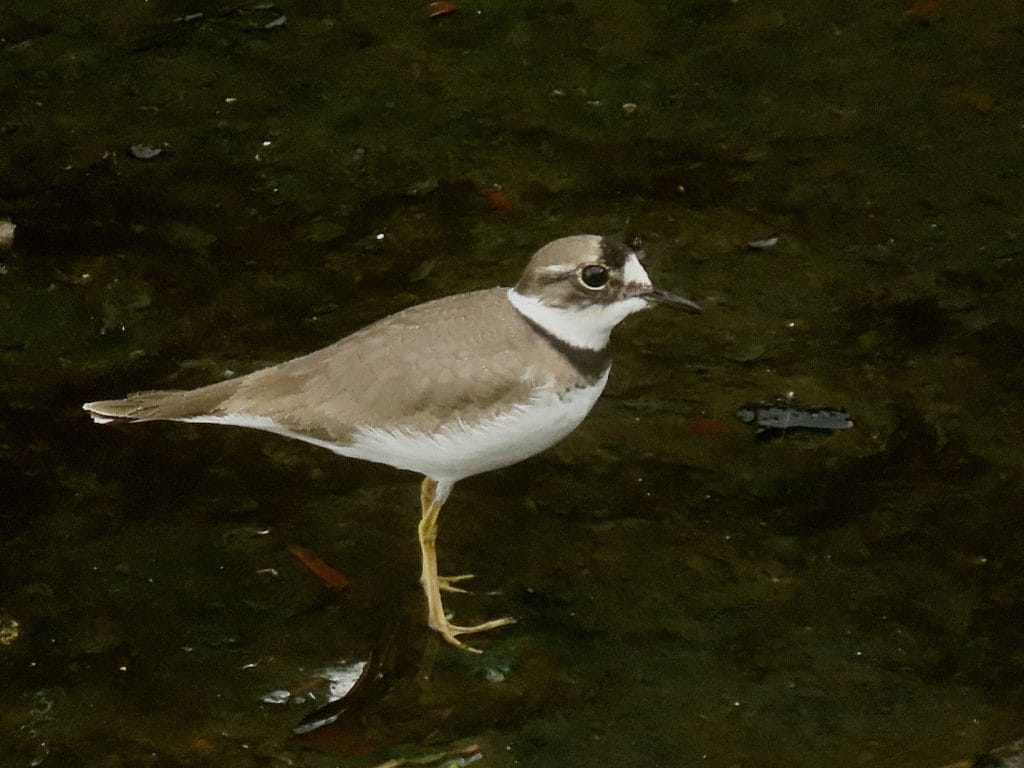By Mads Bajarias
A personal account of the first record of Long-billed Plover (Charadrius placidus) in the Philippines
Batanes ranks high in the list of places that birders in the Philippines wish to visit to see some cool birds. A big part of the reason is that, come winter migration season, scores of surprising vagrants find their way there from mainland Asia or Taiwan. If one is diligent enough, there is always a chance of seeing a rare bird—even a country list—in Batanes during the northern winter, from geese to ducks, from thrushes to buntings, from hoopoes to waxwings.
A mere 200 kilometers or thereabouts away from the southern tip of Taiwan, Batanes is nearer —and has more affinity in terms of avifauna— to the East Asian region than the rest of the Philippines. In fact, when planning to bird in Batanes, it is advisable to bring a guide book on East Asian rather than Philippine birds. The former is undoubtedly more helpful in identifying the species over there.
Back in December 2022, Lu-Ann and I had lined up a tour for mid-elevation specialties in Palawan, something we had planned for a long time. But at the last minute the organizer backed out, citing permits and guides that apparently hadn’t been arranged even though we had paid the requisite deposit. Not one to wallow in despair, Lu-Ann took matters into her own hands, and googled flight schedules and fares. The airfare was prohibitive but faced with the prospect of spending the tail-end of the holidays in traffic-choked Manila, Lu-Ann declared, “let’s go instead to Batanes.”
Arriving in Basco, we were practically the only tourists in town. I am sure there were other out-of-towners like us but very few, or their itineraries took them to sites away from our birding spots so we never saw much of them. Weather-wise it was damp and windy. These conditions, however, meant we could bird all day without getting exhausted. The constant breeze and lack of pollution meant our clothes remained relatively stink-free even after a day’s walk.
Whenever the rains in Basco fell too hard for us to bird, our Plan B involved driving south where it was mostly drier and warmer than the capital. The first stop on this route is Sayad Bridge, which overlooks a cove.
On December 31st, our guide Albert, Lu-Ann and I observed a lone plover standing and preening on the gravelly beach in the cove below Sayad Bridge. My initial thought was, “oh it’s just a Little Ringed Plover,” and I turned my attention to other birds on the beach. There wasn’t a lot to look at: a pair of Common Sandpipers, a White-breasted Waterhen, a Great Egret, a Grey Heron, and the ubiquitous Blue Rock Thrush. This was rather disappointing, because our previous stop-over here had yielded, among other things, a Gadwall and a Falcated Duck. A bit deflated, we pondered what to do next: stay longer in the hopes that something interesting will turn up in the cove, or try our luck further south.
While hemming and hawing about what to do next I saw one of the sandpipers walking towards the plover, which was busy preening, and noticed that the two seemed to be the same size. This was strange, I thought. Having seen Little Ringed Plovers numerous times before I knew it should be smaller than the sandpiper. I pointed this out to Albert and asked Lu-Ann to take videos of the sandpiper and plover.
At one point the sandpiper was side by side with the plover and we could see clearly that they were roughly the same height. There was no doubt about it. As we focused our attention on the plover we noticed other peculiar features, like the following: the bill appeared thinner and longer than the usual LRP, the eye-ring was almost nonexistent, and the legs and body looked longer than the usual LRP.
We were now convinced that this was no LRP. We took photos and videos (too many!) for documentation and submission to the Wild Bird Club of the Philippines Records Committee.
So, what are some of the lessons that I learned from this experience:
- Always bring a field guide. I have a copy of the “Waterbirds of ASEAN,” which shows the plovers in the region. If I had the book with me onsite we would have identified the plover as Long-billed Plover much more quickly.
- Take your time when observing birds in an unfamiliar place. I had been too hasty in dismissing the plover as LRP. By spending more time looking at it, we noted more details, especially on the upperwing and underwing. Look more closely and take nothing for granted.
- Take videos when you can of an unidentified bird in various angles and poses. The more photos the better. One never knows what feature might be crucial in identification.
- Share information and ask questions. By submitting photos and video of the plover to the Rarities Committee, more experienced birders on the committee were quickly able to determine what species it is and that it is a new Philippine record.




